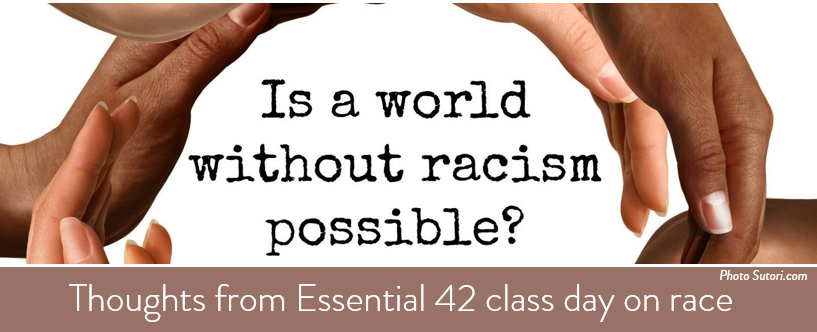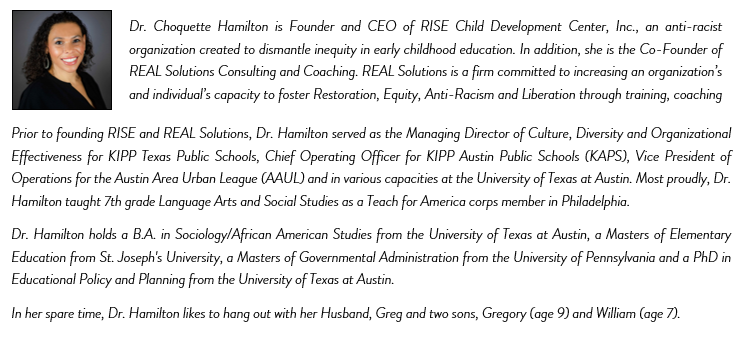
“When the closing poll flashed on the screen, the looks of despair glared through my computer screen. “How confident are you that racism will end in our lifetimes?” Turns out, the Essential 42 – Class 2021 wasn’t very confident. In fact, more than 50% of us didn’t believe it was possible while a small majority believed there was a slight possibility. As the eternal optimist in the group who does believe racism will end sooner rather than later, I posed a question to my colleagues, “what would the world actually look like if we didn’t have racism? Do you have a vision for that future?” Not surprisingly, many, if not most people in our class did not have a clear vision of what our world could look like without racism. I pushed further, “if you don’t know what the world would look like without racism, how will we ever be able to dismantle it?” I personally have lots of thoughts on what our world would look like without racism, however, before I share, I want to take us back to the beginning of this story.
For our November class, we had the pleasure of spending two days with one of the most renowned racial equity facilitators in the world, Mr. Glenn Singleton. For over 30 years, Mr. Singleton has taught hundreds of thousands of people how to engage in sustained and deepened dialogue on race using the Courageous Conversations protocol and framework as well as the Beyond Diversity™ curriculum. As a cohort, we unpacked the impact of racism across the globe; debated the definition of racism and its relationship to power and whiteness; as well as engaged in dialogue about white fragility and anti-Blackness. Needless to say, two days was not enough time. And, it was very clear to me, we have more work to do.
One of the goals of participating in the Essential Class, the flagship Leadership Austin program, is for alumni to increase their impact through civic engagement in our community. Leadership Austin understands that its alumni cannot meet this goal without having a deep understanding of how racism operates in our society. This month’s class was just the beginning for some and the continuation of the journey for others. For me, I’ve been on this journey for a while and I have spent some time pondering the future I want for myself, my children and my community including what that future looks like without racism. While the vision I have is far more complex to spell out in a short blog post, I’ll share a few of my ideas. First, no one’s life circumstance would be predicted by “race” such as the likelihood to die at childbirth, be incarcerated, or one’s ability to accumulate wealth. In fact, the concept of “race” would be null because it would not have power. “Race” would be something we study in history books next to ideas so as “the world is flat.” In addition, empathy would reign over rugged individualism. I could go on and on but I am not. Instead, I’m going to put the onus on you dear reader. If you do not have a vision for what your life or community could look like without racism, I encourage you to spend some time developing one. Here are a few tips to get you started:
- First, you need a deep understanding of how race and racism was constructed over the last 400+ plus years. A few good resources are the Scene on Radio: Seeing White podcast or the 1619 Project by the New York Times.
- Second, gain insight into what the world could be like without racism by exploring the unique culture and history of our indigenous ancestors both in the United States of America and around the globe. Before they were subjected to conquest, colonialization and genocide, our indigenous ancestors lived in a world absent of racism. A great place to start is the website, Illuminatives.org.
Despair will not help us in the fight to end racism. Hope will. Racism was created and therefore it CAN be destroyed but it will take all of us. Are you in?”
Dr. Choquette Hamilton, Essential 42 – Class 2021
Chief Executive Officer, RISE Child Development Center, Inc.

